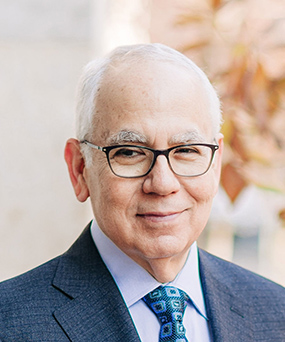What Biden’s Debt Relief Plan Actually Does—and How It Is Tailored to Respond to the Pandemic
Skepticism of emergency authority should not scuttle Biden’s debt relief plan.
-jpg.jpg?sfvrsn=f3eebf32_0)
Published by The Lawfare Institute
in Cooperation With

As the Supreme Court prepares to hear oral arguments in two cases concerning the Department of Education’s plan to grant partial debt relief to some student borrowers emerging from the coronavirus pandemic, critics have argued to the Court, and in these very pages, that the debt relief plan represents dangerous, unbounded executive action that must be reined in.
These arguments attack a caricature of the debt relief plan, untethered from the specifics of the plan itself—what it actually does, why it takes those steps, and, importantly, how it is grounded in the law. Those specifics complicate the idea that the debt relief plan is simply an abuse of the executive branch’s emergency authority and can’t be justified as a response to the pandemic.
We led a group of two dozen law professors in a brief encouraging the Supreme Court to focus on the nuts and bolts of the debt relief program and its legal authority, rather than letting the details be drowned out by the surrounding political debate, which has become unmoored from the program itself.
In the Heroes Act of 2003, Congress empowered the Department of Education to respond to national emergencies and natural disasters by making sure those disasters don’t leave borrowers struggling with their repayment obligations. To that end, the act authorizes the secretary of education to “waive or modify any” provision of federal student loan programs in connection with “a national emergency,” in order to “ensure” that borrowers don’t emerge from the emergency “in a worse position financially in relation to” repayment of their loans. This text on its face confers broad authority in response to an emergency, including the power to waive or modify students’ outstanding loan obligations.
The act was first invoked during the coronavirus pandemic by the Trump administration to pause all student loan payments for all borrowers during the pendency of the pandemic. This pause continued through the end of the Trump administration and has remained in place under the Biden administration.
The Biden administration has been clear that the emergency suspension of student loan payments cannot remain in effect forever, and it has been preparing to end the pandemic-era payment pause to resume normal student debt payments. However, when the Department of Education studied the effects of restarting payments for millions of borrowers simultaneously across the nation, it found that simply resuming payments at pre-pandemic rates would have dire consequences for hundreds of thousands of borrowers, potentially causing a wave of new bankruptcies. Despite the repayment pause, the pandemic emergency caused substantial deterioration in the financial well-being of student borrowers, particularly lower-income borrowers. The department’s economic analysis showed that borrowers in general, and lower-income borrowers in particular, would have substantially more difficulty making payments in 2022 than they would have in 2019 on the same principal.
Thus, the department decided to pair the resumption of normal student debt payments and the end of the long-standing pandemic emergency with one-time relief for lower-income borrowers only, totaling up to $10,000 for borrowers without Pell Grants and up to $20,000 for borrowers with Pell Grants. In its analysis, the department found that borrowers whose loan balances would be eliminated by this program were disproportionately likely to be low income and at high risk of default; and for remaining borrowers, the median effect on their monthly payments would be a reduction in monthly payments of around 31 to 38 percent, rates shown to be sufficient to reduce delinquency in studies of mortgage modification programs.
Critics of the program seek to wave away the specifics of the program design and agency justification, but these specifics matter a great deal. An action using emergency authorities does not become unlawful, or inherent overreach, just because it affects a policy space that has preexisting problems. Some proponents of using emergency authority to effect transformative change in the borrower landscape had called on the administration to cancel all student debt. Sen. Elizabeth Warren advocated for a plan to cancel $50,000 of debt for every student in the country. The Biden administration took neither of these steps when it chose to invoke the Heroes Act. Instead, it targeted one subset of borrowers (those with lower incomes) for limited relief, tied to concrete findings about the increased risk of default from ending the emergency and restarting normal payments, and made this relief one-time only without making any changes to the federal student loan program going forward. Critics should grapple with the tailored reality of the actual program and its grounding in the act, rather than assume that any emergency action that has echoes of an administration’s policy goals is unlawful.
Critics of debt relief also question more generally the application of the Heroes Act to a national emergency that began more than two years earlier. But dig more deeply, and these criticisms are less persuasive than they might appear at first glance.
As an initial matter, there is no question that the coronavirus pandemic constituted a genuine national emergency sufficient to invoke emergency authorities. The worst pandemic our planet had seen in a century, it killed more than a million Americans in a few short years and wrought a variety of sudden and dramatic transformations in American life. For that reason alone, it is misleading to compare the Biden administration’s actions in response to the pandemic to attempts by the Trump administration to impose immigration restrictions in response to a migrant “emergency” that had ebbed and flowed for decades. The pandemic constituted a bona fide emergency in every sense of the word; migrant arrivals at the border did not.
Beyond that, legal critics of the debt relief plan fail to acknowledge the Heroes Act for what it is: a disaster relief and recovery statute. These critics selectively focus on earlier versions of the law, which, it’s true, were more limited in scope, focused on relief to service members returning from Iraq and Afghanistan. But Congress specifically revised the Heroes Act in 2003 to cover national emergencies more broadly and to provide relief to any person who “resides or is employed in ... a disaster area,” not just service members.
There is nothing unusual about a disaster relief statute providing funding in 2022 to recover from a disaster that began in 2020. As with any other natural disaster, rebuilding begins in earnest after the storm has passed. Indeed, every single state in the United States, including every state suing over this plan, has declared itself an ongoing disaster area due to the coronavirus. As six states argue in the Court that the time for pandemic relief to borrowers has passed, those same states will continue to receive hundreds of millions of federal dollars for pandemic disaster recovery through 2023 and beyond. We presume that critics of the Department of Education’s debt relief plan, seeking to cut off borrowers who are at risk of bankruptcy, would not seek to apply the same standard to cut off disaster recovery funds to every state receiving it two years after being struck by a catastrophe.
As the Court evaluates the Biden administration’s program, it should tune out some of the most overheated rhetoric about the program from all sides and, instead, see it for what it is: a straightforward, tailored invocation of disaster relief authority, in response to a genuine national emergency, designed to help wind down the state of emergency while providing exactly the type of safety net for student borrowers that Congress envisioned.






.jpg?sfvrsn=5a43131e_9)

